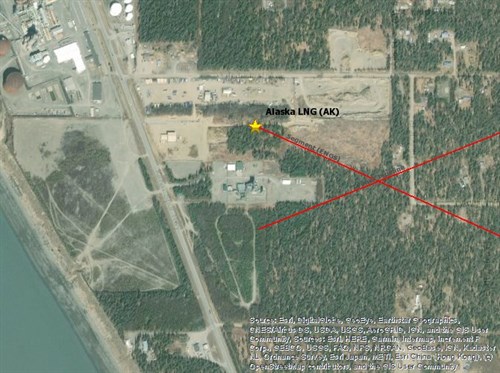U.S. issues mixed report on Alaska Gasline's LNG export plant
U.S. energy regulators issued a report for Alaska Gasline Development Corp’s proposed $43.4 billion Alaska liquefied natural gas (LNG) project that found it would provide economic benefits to the state but could hurt the environment.

In the report, known as an environmental impact statement, staff at the Federal Energy Regulatory Commission (FERC) concluded construction and operation of the project would result in “temporary, long-term, and permanent impacts on the environment.”
The staff said “some impacts would be adverse and significant” but noted that “most impacts would not be significant or would be reduced to less than significant levels with the implementation of proposed or recommended measures.”
“Alaska LNG holds the potential for significant environmental, energy, economic, and employment benefits for Alaskans,” Alaska Gasline Interim President Joe Dubler said in a statement after FERC issued the draft report.
“We will now begin to thoroughly examine this comprehensive document to understand the commission’s recommendations,” Dubler said.
Specifically, FERC staff said constructing the project would have significant impacts on the permafrost, wetlands and forests and could likely be significant for caribou.
In addition, construction and operation is likely to adversely affect six federally listed species - spectacled eider, polar bear, bearded seal, Cook Inlet beluga whale, humpback whale and ringed seal.
FERC staff, however, said the project would result in positive impacts on the state and local economies.
Alaska Gasline said in March it signed agreements with BP PLC and Exxon Mobil Corp to help advance the development of the Alaska LNG project.
BP and Exxon Mobil produce massive amounts of oil in Alaska and have discovered huge gas resources that are stranded in the North Slope. The project would allow that gas to access markets around the world.
The project is designed to liquefy about 3.5 billion cubic feet per day (bcfd) of natural gas from a facility to be built in Nikiski on the Kenai Peninsula southwest of Anchorage. It includes an 807-mile (1,300-km) pipeline from the North Slope.
One billion cubic feet is enough gas to fuel about 5 million U.S. homes for a day.
Alaska LNG is just one of more than four dozen LNG projects under development in the United States, Canada and Mexico.
Just looking at projects under construction, U.S. LNG capacity is expected to jump to 10.0 bcfd by the end of 2020 from 6.4 bcfd now, putting the country on track to become the world’s biggest LNG exporter by the mid 2020s.
Reporting by Scott DiSavino Editing by Tom Brown

- ExxonMobil halts 1-Bft3d blue hydrogen project in Texas
- Aramco and Yokogawa commission multiple autonomous control AI agents at Fadhili gas plant
- Ukraine will resume gas imports via Transbalkan route in November
- Mitsubishi to inject $260 MM into Brunei LNG project
- Freeport LNG (U.S.) on track to take in more natgas on Thursday after unit outage



Comments